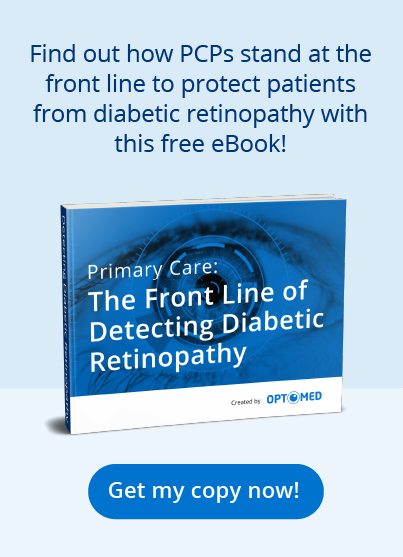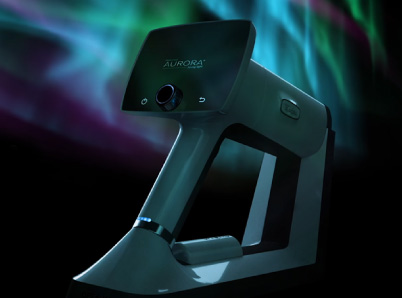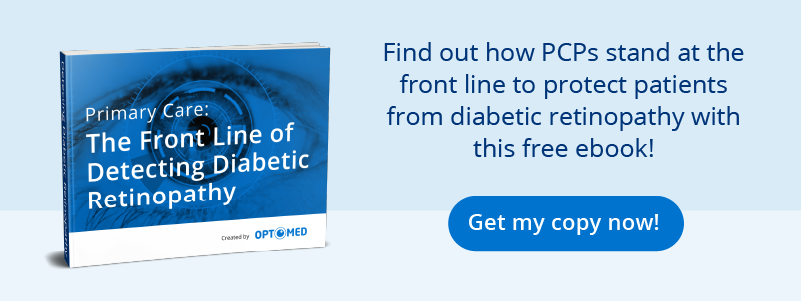In 2019, approximately 54.8 million American adults, or 12.8% of the population ages 20-79, had diabetes. The prevalence of diabetic retinopathy was 14.7%. Sadly, diabetic retinopathy is often not diagnosed until it’s too late. Although the CDC recommends that all people with diabetes get yearly dilated eye exams, this typically does not happen. Barriers such as time pressure, lack of access to a specialist, insufficient education, fear, transportation problems, and insurance coverage issues can prevent patients from getting their diabetic retinopathy fundus exams.
Annual dilated eye exams can prevent up to 95% of vision loss from diabetes. Unfortunately, almost 60% of people with diabetes do not get regular eye care; smokers are even less likely to do so, as are younger individuals. Despite public service announcements emphasizing preventive eye care, many patients do not go to the doctor until it is too late. Compounding the logistical barriers to visiting an eye doctor, early eye disease often does not cause overt symptoms, particularly if it is only manifesting in one eye. This makes people even less likely to have the impetus to see an eye care professional. Patients, unless symptomatic, do not realize that there is a problem until they go in for a diabetic retinopathy fundus examination. Only once one is diagnosed with diabetic retinopathy does it become more likely that they will seek regular eye care. Although diabetic retinopathy is treatable, the earlier that the diagnosis is made, the better.
While most diabetic patients may not have an eye care provider, they usually have a personal doctor—as of 2015, 75% of US adults had a primary care physician. This is someone whom they visit regularly and have built a longstanding relationship with based on trust. Patients are more likely to share symptoms and concerns with a doctor who knows them. Patients who stay with their primary care doctor over the long term can avoid costly emergency room visits and hospital admissions. Rather than having to recount their health history at every visit, patients can pick up where they left off, knowing that their primary care doctor is familiar with their past. Physicians can build a depth of knowledge about a patient over the years, a context that helps in the efficiency and efficacy of health care delivery. Although eye care may not be top of mind for diabetic patients, their blood sugar control usually is. Due to regularly scheduled appointments to review labs and refill medications, patients generally see their primary care doctors frequently.
This puts primary care physicians in an ideal situation to screen for diabetic retinopathy. Now they can do this with Optomed Aurora, a non-mydriatic fundus camera. Images can be obtained by staff effortlessly with this easy-to-use handheld device. The training required to use the instrument is minimal, and image acquisition is easily delegated with confidence. Since no pupil dilation is required, patients can drive themselves home. This can mean that patients won’t be resistant to the implementation of this technology; in fact, they can see it as a value-added service. Better yet, doctors don’t have to struggle with the use of an ophthalmoscope. With a four-inch image and a fifty-degree field of view, fundus details are quickly captured in a high-quality photograph. Images can then be read via telemedicine.
Telescreening for diabetic retinopathy in primary care offices increases screening rates by approximately 15% for rural and underserved patients. Although most patients screened will be reassured that they do not have any retinopathy, some will be found to have some level of the disease. A smaller cohort will have retinopathy that requires treatment by a retina specialist. With the clarity of imaging and consequent ease of interpretation, patients who need referrals can easily be identified and categorized by level of urgency.
Furthermore, adding the use of Optomed Aurora to a primary care visit generates substantial revenue for the practice. If the demographics of the US population were to be represented in a primary care physician’s practice, this service could potentially be added to at least 10% of patient visits. This number could be even higher, depending on the makeup of the practice. In rural and/or underserved areas, barriers such as transportation problems and lack of access to a specialist could be more problematic than in urban areas. Implementing this affordable technology in primary care practices enhances public health by improving access to care. With staff being able to perform the procedure, the doctor’s time is not taken away from attending to patients. Also, primary care physicians can be reassured in knowing whether their patients have a sight-threatening eye disease, rather than relying on their compliance to visit an eye care professional. If all diabetes patients were screened with regular diabetic retinopathy fundus exams, the disease process could be caught early and appropriate referrals for treatment could be made. Without routine screening, however, patients are at risk of losing their vision. Simply put, this technology can save people’s sight.
Here at Optomed, our mission is to help save the vision of millions of people. By integrating our software and artificial intelligence solutions with our camera, we enable eye screening for everyone, wherever they are. To see how we can equip you to save the sight of more patients, schedule a free consultation today!



